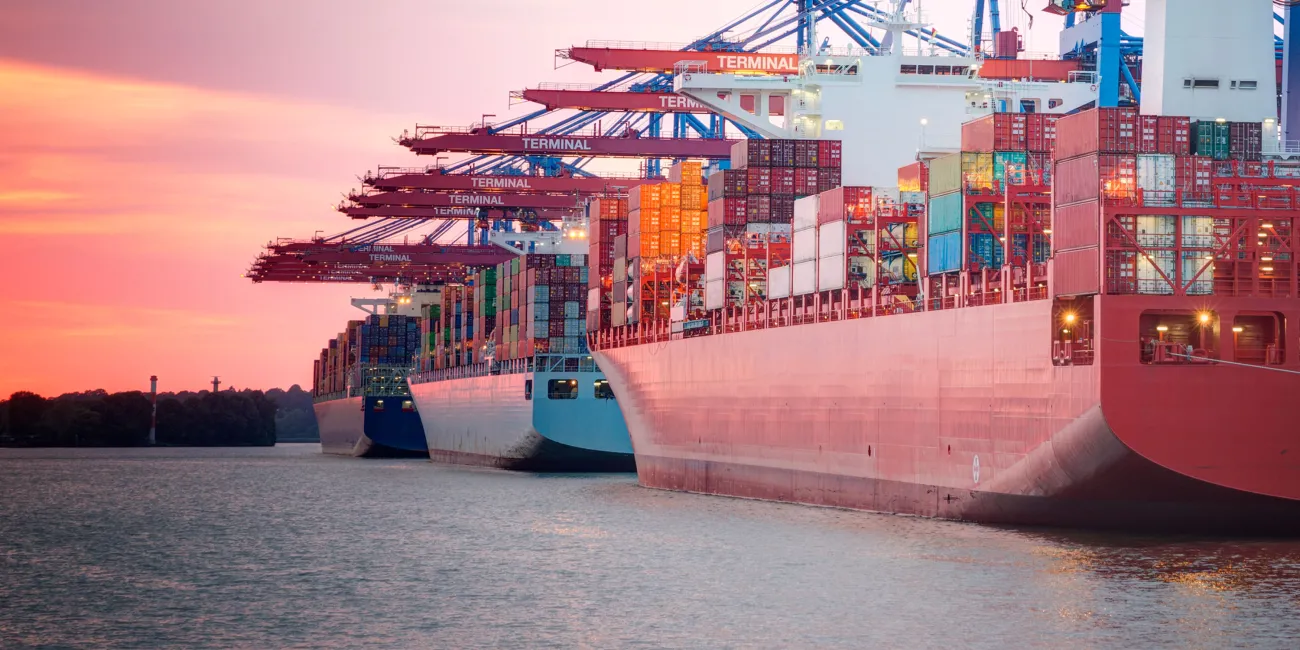Trump Tariff Headlines – From Talk to Action

As of this writing on February 3, the president’s long awaited new tariffs have been officially announced via Executive Orders (EOs) from the White House for Canada, Mexico, and China. They confirm media reports of new 25% tariffs for imports from Canada (except energy resources) and Mexico and 10% for imports from China entered on and after February 4. Canadian energy resources will be subject to a 10% tariff. The rates of duty are in addition to any other duties, fees, exactions, or charges applicable to such imported articles.
Editorial Note: Following the publication of this article, the implementation of additional tariffs on goods from Mexico and Canada was postponed for a minimum of 30 days to allow for ongoing negotiations. We are actively monitoring the situation and will issue further updates as new information becomes available.
The EOs relating to Canada can be read here, Mexico can be read here, and China can be read here.
Keep in mind a lot can change between now and February 4, as well as quickly thereafter. Additional reports from Monday suggest additional developments may be in the works as the countries continue to negotiate.
How We Got Here
To say the situation has been fluid may be an understatement. On day one, the newly inaugurated president signed a trove of EOs, including his America First Trade Policy. These were widely anticipated given the president’s campaign pledge that tariffs would be imposed “on day one.” That did not happen.
Later that day, news was again made from President Trump’s remarks that tariffs on Mexico and Canada may be launched on February 1. Similarly, long awaited news on tariffs for imports from China came the following day. As these reports were persisting, on January 26, the president announced immediate tariffs authorized under the US International Emergency Economic Powers Act (IEEPA) on Colombia. These tariffs were rescinded within a few hours through negotiations with the country’s leadership.
In the following days, further escalated discussions regarding the February 1 tariffs for Mexico and Canada led to a penultimate January 31 report moving the tariffs to March 1. Within the hour, presidential remarks rebuffed the March 1 reports as false, affirming the February 1 timeline.
Now that official details have been released from the new Administration, our team has prepared the following analysis for executives facing critical decision making and who need guidance on how best to prepare and in preparation of possible tariffs.
What We Know Now
Scope
These tariffs are imposed through the unprecedented use of the IEEPA. In trade terms, the Presidential Action triggering tariffs will typically provide guidance on the scope of products, such as what good (e.g., Harmonized Tariff Schedule of the United States) and from where (e.g., country of origin), covered by the order. The orders appear to cover all products from the three trading partners based on country of origin, but specific definitions are unspecified. Instead, the EOs refer to a “product of” Canada, Mexico, or China being impacted by the tariffs. The EOs also indicate that more details on the implementation of these tariffs will be issued through a Federal Register notice.
A “product of” Canada, Mexico, or China is likely to mean the product has a country of origin of one of those countries, but this still raises questions as to how the “country of origin” would be determined. While the “substantial transformation” test is often used in these types of determinations, it would not be unthinkable for a different standard to apply, (e.g., the marking rules under 19 CFR Part 102.) The not-yet-published Federal Register notice is anticipated to provide more illumination on the precise scope of the tariffs.
What to Do Now
The importance of a company-wide effort to determine their product line or supply chain country of origin may now be a CEO or CFO priority. This team should comprise company divisions involved in the US-bound shipment, such as accounting, engineering, in-house legal offices, and marketing procurement. Understanding US definitions of trade regulations and past US Customs and Border Protection (CBP) tariff classification rulings should be a first and top priority and legal advice should be considered.
- Implementation Timeline. The key frontline agency in rolling out these new tariff impositions will be CBP. The agency will need time to adjust their data collection systems and communications with the trade community.
The EO’s for all three trading partners make clear that tariff assessment will begin February 4, only exempting shipments on the water in final transit to United States before 12:01am ET on February 1. The EOs explain that the ad valorem “rate of duty shall apply with respect to goods entered for consumption, or withdrawn from warehouse for consumption, on or after 12:01 a.m. eastern time on February 4, 2025, except that goods entered for consumption, or withdrawn from warehouse for consumption, after such time that were loaded onto a vessel at the port of loading or in transit on the final mode of transport prior to entry into the United States before 12:01 a.m. eastern time on February 1, 2025, shall not be subject to such additional duty, only if the importer certifies to CBP as specified in the Federal Register notice.”
All three EO’s would preclude the use of drawback and de minimis provisions and each include a retaliation clause for escalation in response to retaliatory measures by the other countries.
As we point out above, the Federal Register should provide more guidance, which the public should expect in next days.
What to do now. Whether a company’s US-bound shipments are arriving at ports of entry after multiple days at sea or within a few hours of a Canada or Mexican supplier, executives will want to understand the legal applications of “time of entry” and their options, such as the use of Foreign Trade Zones.
- Import Product Valuation. US tariffs are applied on the “imported value” of the merchandise/product which is generally the transaction value of the import. Many forms of CBP appraisement are available to determine transaction value, including production assists and other inputs. A 25% tariff on an import from Canada or Mexico, which is free of tariff when United States-Mexico-Canada Agreement (USMCA)-qualifying, imposed on a $1,000 import is a revenue loss to the importer of $250. Importers who may have been overstating the imported value can find revenue savings after an assessment founded upon proper legal understanding of customs regulations and definitions.
What to do now. In the example above where we suggest an intra-company effort, every company division involved in the purchasing of foreign parts and their use in Canadian or Mexican production may want to take a fresh look at how their US import team calculations “value” to find opportunities where they exist to mitigate revenue loss exposure, including a possible increase of CPB surety bonds as a result of new tariff applications and import scrutiny. This exercise should include a calculation of the company’s US-bound shipments claiming USMCA eligibility.
- Tariff Enforcement. The imposition of new or expanded tariffs is not only a revenue enhancer for the federal government but a key trade enforcement and economic security priority for the White House and Members of US Congress. Months can elapse from the day of tariff imposition before CBP field offices formally communicate with importers of enhanced scrutiny of their transactions. These communications typically come in the form of CF-28’s or CF-29’s and are usually sent to a company’s broker on record or to company representatives. They often are a first indicator that a company’s import transaction history is the subject of a full-blown CBP audit which can look back five years and span a number of years to conclude.
What to do now. US importers will want to ensure that key divisions of their company, including external service providers, are aware of this environment of heightened trade scrutiny and issue clear instructions to bring such communications from CBP to the attention of key executives immediately for a timely and proper strategy of response. As we learned from the tariff threats with Colombia, CBP will take forceful action as demonstrated in this CBP press release that read:Sun, 01/26/2025
At ports of entry, the Office of Field Operations has commenced enhanced inspections of flights, private aircraft, and cargo to and from Colombia. CBP has already denied boarding to flagged visa holders and in coordination with the Department of State and is enforcing the travel ban on Colombian officials. CBP is prepared to act swiftly in support of its national security mission.
-
The After Effects. As the trade war continues to escalate with China, at least in these moments, we are now witnessing the possible start of trade wars with historically other major trade partners, such as Canada and Mexico.
Ottawa and Mexico City are sure to be weighing their options in regard to these new tariffs, including retaliatory actions, either new tariffs on imports from the United States or other options. In a highly integrated North American manufacturing sector, tariffs and retaliatory tariffs can spiral profit and loss projections. Executives will want to be kept apprised of news from these two capitals and seek advice on whether and how they apply to their Canada and Mexico bound parts and supplies.
In addition, these new tariff impositions should be considered in the backdrop of intense preparation for the USMCA negotiations currently on the calendar for July 2026. Renewing the six-year-old pact is the opportunity to benefit from continued tariff preferential benefits. But the tariffs President Trump is proposing are unilateral tariffs authorized by Congress to the Executive and will apply to USMCA-eligible imports as well as non-USMCA transactions.
What to do now. Access to the US market is no longer easy nor cheap. A tangle of US trade rules and new tariff threats are forcing executives to make medium to longer term investment decisions, including the option of near shoring or shifting production within US shores. These are not decisions to be made without a fulsome understanding of the US trade policy landscape, including geopolitical tensions between Washington and Beijing, and changing relations with capitals heretofore considered adverse to US interests.
To help executives with these considerations, the team at ArentFox Schiff launched Trump Tariffs 2.0: The Tariff Tracker, a website that aims to separate the proverbial wheat from the chafe. In addition, we have organized our own interdisciplinary team of US trade regulation attorneys to bring a holistic approach to executives seeking the wider angle.
In short, we put in practice our firm’s tagline — we are smart in your world.



